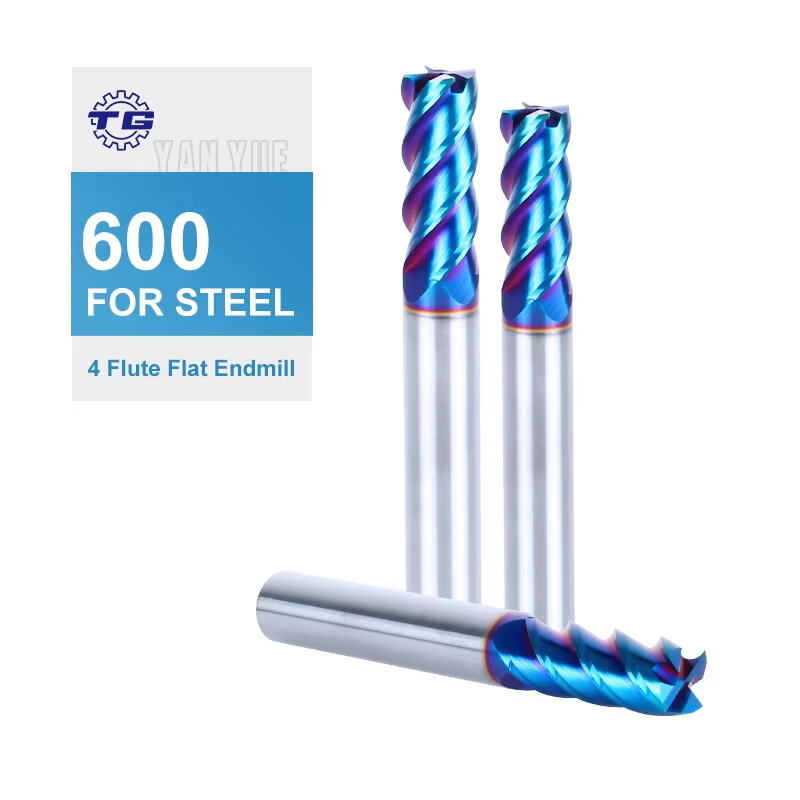La Evolución de los Materiales Modernos para Herramientas de Corte
En el mundo de la fabricación precisa y el mecanizado de metales, la elección del material de la herramienta puede marcar la diferencia entre resultados mediocres y excepcionales. Varillas de carburo cementado han surgido como el estándar de oro para la fabricación de brocas y fresas de extremo, revolucionando la forma en que las industrias afrontan las operaciones de corte y mecanizado de metales. Este material extraordinario combina la dureza del carburo de tungsteno con la tenacidad de aglutinantes metálicos, creando un compuesto que supera ampliamente al acero tradicional para herramientas en casi todos los aspectos.
El camino de varillas de carburo cementado desde su desarrollo inicial hasta su condición actual de material de fabricación indispensable, demuestra décadas de innovación metalúrgica. Actualmente, los fabricantes dependen cada vez más de estos componentes de alto rendimiento para satisfacer las crecientes demandas de precisión, durabilidad y eficiencia en los procesos modernos de mecanizado.

Propiedades Superiores de los Materiales de Carburo Cementado
Dureza y Resistencia al Desgaste Excepcionales
La ventaja fundamental de las barras de carburo cementado radica en sus notables características de dureza. Con valores de dureza que suelen oscilar entre 1300 y 1600 HV, estos materiales mantienen la integridad de su filo incluso en condiciones extremas. Esta excepcional dureza se traduce en una vida útil del herramienta significativamente mayor en comparación con las alternativas de acero rápido, reduciendo la frecuencia de los cambios de herramienta y el tiempo de inactividad asociado.
La resistencia al desgaste de las barras de carburo cementado es especialmente notable en aplicaciones de mecanizado de alta velocidad. La composición única del material le permite mantener su integridad estructural incluso a altas temperaturas, evitando el fallo prematuro de la herramienta y asegurando un rendimiento de corte constante durante largos períodos de operación.
Estabilidad Térmica y Resistencia al Calor
Los entornos de fabricación suelen someter a las herramientas de corte a condiciones térmicas extremas. Las barras de carburo cementado destacan en estas situaciones debido a su excelente estabilidad térmica. El material conserva su dureza a temperaturas de hasta 800 °C, mientras que los aceros convencionales para herramientas empiezan a perder sus propiedades mecánicas a temperaturas mucho más bajas.
Esta resistencia térmica es especialmente valiosa en operaciones de mecanizado de alta velocidad donde la temperatura de corte puede aumentar considerablemente. La capacidad de las barras de carburo cementado para mantener sus propiedades bajo estas condiciones asegura un rendimiento de corte constante y prolonga considerablemente la vida útil de la herramienta.
Beneficios de Fabricación y Ventajas Económicas
Productividad y Eficiencia Mejoradas
La implementación de varillas de carburo cementado en los procesos de fabricación conduce a mejoras sustanciales en productividad. Estas herramientas permiten velocidades de corte y tasas de avance más altas en comparación con materiales tradicionales, lo que posibilita a los fabricantes completar operaciones más rápidamente sin comprometer la calidad. Las tasas incrementadas de eliminación de material se traducen directamente en una mayor producción y una eficiencia operativa mejorada.
Además, la excepcional durabilidad de las varillas de carburo cementado implica menos cambios de herramienta y una reducción en el tiempo de inactividad de las máquinas. Esta continuidad operativa es especialmente valiosa en entornos de fabricación automatizados donde un desempeño consistente de las herramientas es esencial para mantener los programas de producción.
Rentabilidad a lo Largo de la Vida Útil de la Herramienta
Aunque la inversión inicial en varillas de carburo cementado puede ser superior a la de los materiales tradicionales para herramientas, los beneficios económicos a largo plazo son convincentes. La mayor duración de la herramienta y la menor frecuencia de reemplazos dan lugar a unos costos totales de herramientas más bajos por pieza producida. Además, la capacidad de mantener tolerancias más ajustadas durante períodos más largos reduce las tasas de desecho y los gastos relacionados con la calidad.
El superior rendimiento de las varillas de carburo cementado también contribuye al ahorro de energía en las operaciones de mecanizado. La capacidad del material para mantener bordes de corte afilados reduce la potencia necesaria para las operaciones de corte, lo que conduce a un menor consumo de energía y a menores costos asociados.
Versatilidad y Rendimiento en la Aplicación
Amplia Gama de Operaciones de Mecanizado
Las barras de carburo cementado demuestran una versatilidad notable en diversas aplicaciones de mecanizado. Desde operaciones de perforación de alta precisión hasta procesos de fresado complejos, estas herramientas destacan tanto en operaciones de desbaste como de acabado. Las propiedades del material las hacen especialmente efectivas para mecanizar materiales difíciles, tales como aceros endurecidos, aceros inoxidables y aleaciones de alta temperatura.
La adaptabilidad de las barras de carburo cementado se extiende a diversos sectores industriales, incluyendo aeroespacial, automotriz, fabricación de dispositivos médicos e ingeniería general. Esta amplia aplicabilidad las convierte en una opción preferida por los fabricantes que buscan soluciones de herramientas versátiles.
Acabado superficial y capacidades de precisión
La mayor dureza y resistencia al desgaste de los barrenos de carburo cementado contribuyen a una calidad excepcional del acabado superficial en las piezas mecanizadas. La capacidad de mantener bordes de corte afilados durante toda la vida útil de la herramienta garantiza valores consistentes de rugosidad superficial y precisión dimensional. Esto es especialmente importante en aplicaciones donde las tolerancias ajustadas y los acabados superficiales superiores son requisitos críticos.
La estabilidad de las herramientas de carburo cementado también permite un mejor control del proceso y repetibilidad en las operaciones de fabricación. Esta consistencia es invaluable para mantener estándares de calidad y cumplir especificaciones precisas en componentes de alto valor.
Tendencias y desarrollos futuros
Tecnologías avanzadas de recubrimiento
La evolución de las barras de carburo cementado continúa con el desarrollo de innovadoras tecnologías de recubrimiento. Los recubrimientos PVD y CVD modernos mejoran las ya impresionantes propiedades de las herramientas de carburo, proporcionando mayor resistencia al desgaste, fricción reducida y una estabilidad térmica mejorada. Estos avances están expandiendo los límites de lo que es posible en la mecanización de alto rendimiento.
La investigación sobre nuevas composiciones de recubrimientos y métodos de aplicación promete ampliar aún más las capacidades de las herramientas de carburo cementado. Estos desarrollos se centran en abordar desafíos específicos en diferentes aplicaciones de mecanizado, manteniendo al mismo tiempo los beneficios fundamentales que hacen invaluable a estas herramientas.
Consideraciones para la Manufactura Sostenible
La durabilidad y eficiencia de las barras de carburo cementado se alinean bien con el creciente énfasis en prácticas de fabricación sostenibles. La mayor vida útil de las herramientas y el menor consumo de energía contribuyen a una menor repercusión ambiental en comparación con soluciones tradicionales. Además, los avances en tecnologías de reciclaje de carburo están haciendo que estas herramientas sean cada vez más amigables con el medio ambiente.
Los fabricantes están considerando cada vez más el impacto del ciclo de vida completo de sus opciones de herramientas, lo que convierte las ventajas de sostenibilidad de las barras de carburo cementado en un factor importante en sus criterios de selección.
Preguntas Frecuentes
¿Qué determina la calidad de las barras de carburo cementado?
La calidad de las barras de carburo cementado está determinada por varios factores, entre ellos el tamaño de grano de las partículas de carburo de tungsteno, el porcentaje y tipo de material aglomerante utilizado, el control del proceso de fabricación y la uniformidad de la microestructura. Estos factores influyen directamente en las características de rendimiento de la herramienta, incluyendo dureza, tenacidad y resistencia al desgaste.
¿Cómo afectan las condiciones ambientales al rendimiento de herramientas de carburo cementado?
Las herramientas de carburo cementado mantienen su rendimiento en una amplia gama de condiciones ambientales. Sin embargo, fluctuaciones extremas de temperatura, exposición a ciertos refrigerantes y almacenamiento inadecuado pueden afectar su durabilidad. Las prácticas adecuadas de manipulación, almacenamiento y operación son esenciales para maximizar la vida útil de la herramienta y mantener un rendimiento óptimo.
¿Qué prácticas de mantenimiento prolongan la vida útil de las herramientas de carburo?
La inspección periódica de patrones de desgaste, la limpieza adecuada después del uso, el almacenamiento correcto en entornos controlados y el cumplimiento de los parámetros de corte recomendados contribuyen todos a prolongar la vida útil de las herramientas. Además, el uso de fluidos de corte adecuados y el mantenimiento de condiciones apropiadas en las máquinas herramienta son cruciales para un rendimiento óptimo y la longevidad de las herramientas de carburo cementado.


